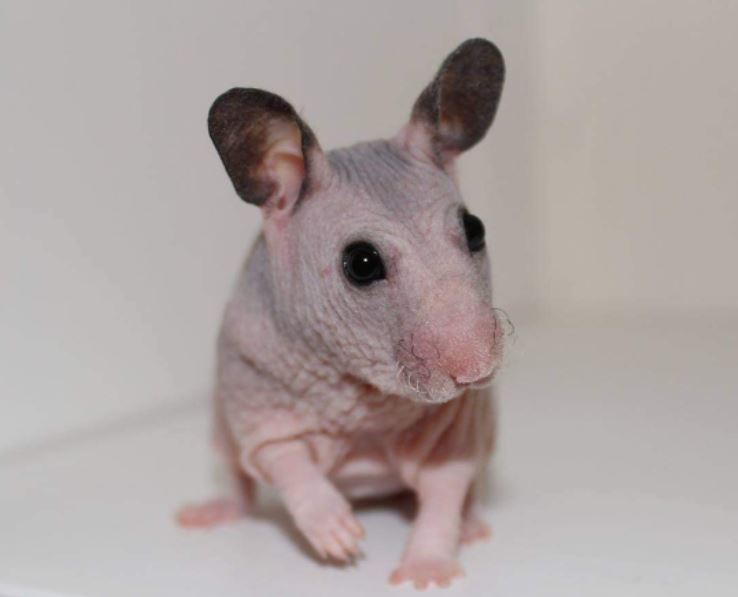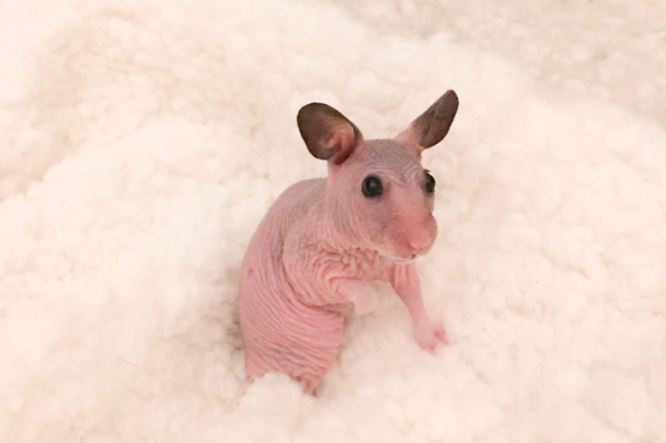Hamsters are known as fuzzy, hairy creatures. However, the hairless hamster is the complete opposite. As the name suggests, it’s a type of hamster that does not have any hair. You might have heard of other animals that do not have hair, such as the Sphynx cat or the hairless rat. The hairless hamster on the other hand is relatively unheard of and many people do not know too much about them.
Today, we’ll go over 9 things you need to know about this hamster variant. Let’s dig in!

9 Fascinating Facts about Hairless Hamsters
1. They are not a distinct breed or species
Hairless hamsters might look very different from others but they’re not a distinct breed or species. Instead, they’re Syrian hamsters that have a genetic mutation that affects the epidermis (the outermost layer of skin) which results in them not having any hair.
2. Hairless hamsters are more difficult to care for

Hamsters have evolved to have fur for a reason. It helps to keep them warm and protects them from the environment. The fact that hairless hamsters do not have any fur means that their bodies must work overtime in order to keep them warm. As a result, they have to speed up their metabolism which burns more calories which means that they need to eat more food to sustain themselves.
People who have one of these hamsters often choose to house them in a plastic or glass tank instead of a wire cage. This way, their cage will be less drafty, which helps to keep them warm. Other things that owners use to keep them warm include heat pads, space heaters, or custom hamster clothes.
The fact that they do not have fur also means that they’re much less protected from the environment and can easily get scratches and other damage to their skin. For instance, while normal hamsters can easily glide through tunnels and slides, these little guys can easily damage their skin if they attempt to do so. In addition, certain types of bedding that are fine for regular hamsters, such as wood shavings or sawdust, are not suitable for bald hamsters.
On top of that, they’re also more susceptible to getting sunburned.
3. They’re sometimes called “Alien Hamsters”
Due to the fact that their lack of hair makes these hamsters look very different from normal hamsters, some people call them “Alien hamsters”.
4. They have a shorter lifespan
Hairless hamsters have a much shorter lifespan than their furry counterparts. On average, they only live about half as long. So, whereas normal Syrian hamsters live for 2 to 3 years, the bald variant only lives for about 1 to 1.5 years.
The reason for their shorter lifespan is that they have worse immune systems and that they have trouble keeping on weight as they get older. As previously mentioned, their bodies expend a whole lot of energy just to keep them warm, so it makes sense that they do not have much energy reserves.
5. They are not hypoallergenic
Some people believe that a hairless hamster is a good choice for people with allergies, but that’s not really the truth. The allergic reaction that some people have to hamsters is not caused by their fur, but instead by a protein in their saliva or by the bedding.
6. There are two types of hairless hamsters
The two types of bald hamsters are created in different ways. One is a result of a genetic mutation whereas the other is a result of breeding two satin-coated hamsters together. Breeding two satin-coated animals together will result in them having very sparse fur. Doing this is actively discouraged because it not only results in a lack of hair, it also results in very poor health.
7. Hairless hamsters should not be bred
Even the bald hamster that’s born as a result of a genetic mutation should not really be bred. The females have poor milk production and are therefore not very capable of nursing their babies. In addition, the fact that hairless hamsters have a shorter lifespan and a much worse quality of life means that it’s best to forego breeding them.
Even if you like their unique appearance, it’s not fair to the animal to breed them for aesthetic reasons while their lifespan is half of that of their normal, furry counterparts and they will never be able to live a normal life. As a Reddit user puts it:
“They cannot lead normal, happy hamster lives. Due to their lack of fur, their skin is not protected and can get scratched and injured by literally anything, even by simply burrowing in aspen shavings or other (safe) wood shavings. Sand baths? Not possible. Any item made out of wood? Not possible. They basically have to be kept in incredibly bland enclosures with only plastic items and will never be able to enjoy an enriching natural enclosure with lots of different textures. They also cannot use tubes as their skin would get pulled back when moving through the tube.” – Noriender
Nevertheless, despite the fact that they really shouldn’t be bred, some breeders still do it because people buy them.
8. They can have curly whiskers or no whiskers at all
Hairless hamsters either have no whiskers or they have curly whiskers. This is not great news for them because hamsters do not have very good eyesight and rely for a large part on their whiskers to navigate the world around them. Without their whiskers, it’s much more difficult for them to do almost all of their normal daily activities.
9. Hamsters without hair would not survive in the wild
In captivity, hairless hamsters are capable of surviving because we take care of them. We can provide them with enough food to raise their body temperature, heat their enclosure, and protect them from danger. In the wild? Not so much. Normal hamsters are perfectly adapted to survive the challenges they face in the wild, but without their all-important fur would unfortunately not stand a chance.
Final words
Hairless hamsters are simply Syrian hamsters that have a genetic mutation that results in them not having any hair. However, while some people might be attracted to their unique appearance, it’s not suggested that you buy them from breeders. The reason is not only that they’re very difficult to care for, but also because this mutation shouldn’t be bred for because these hamsters have a worse quality of life compared to their furry counterparts.
Rescuing hamsters like this from a shelter is of course always a great idea. You’re not placing more demand on them being bred by doing so and you’re giving an animal that already has a tough life a loving home.
- How Long Do American Eskimo Dogs Live? Important Factors and Care Tips - September 29, 2023
- Do American Bulldogs Need Grooming? Essential Tips and Care Guidelines - September 29, 2023
- Do Bengal Cats Enjoy Playing? Essential Tips for Keeping Them Active - September 29, 2023